These are the best vegan and gluten-free German Schupfnudeln. These hearty potato dumplings are very popular in Germany and Austria, and they can be combined with lots of savory dishes.
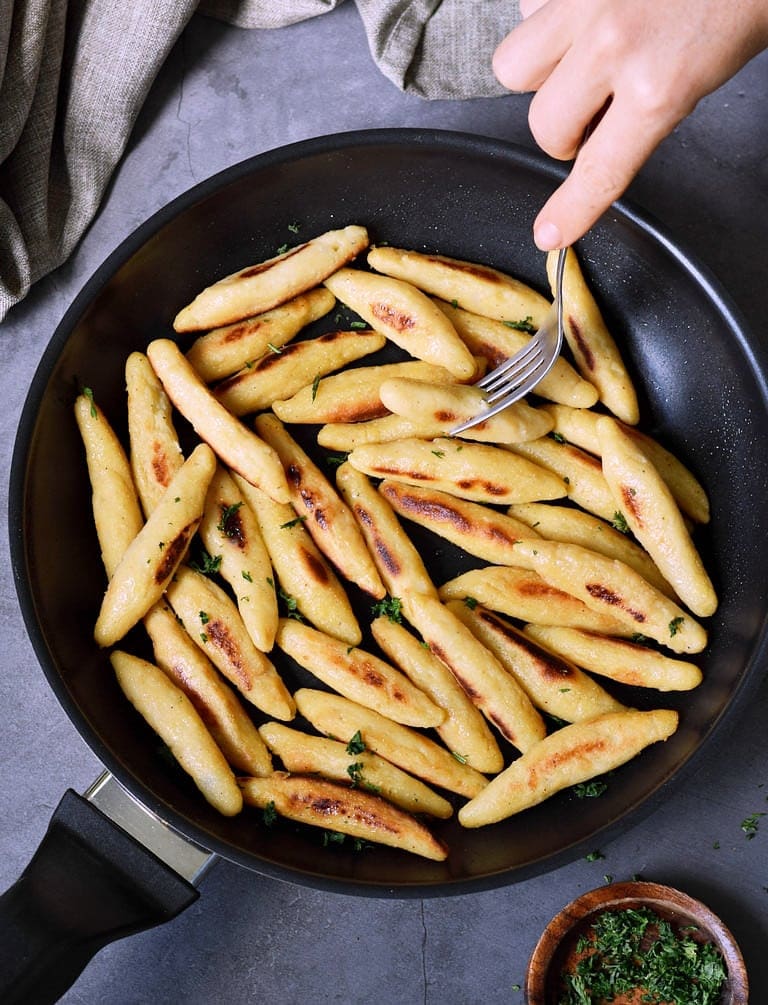
Besides Spätzle and Maultaschen, these German potato noodles are a traditional side dish or main dish in the South of Germany, the Swabian Region (“Schwaben”). They are also called “Fingernudeln” (finger noodles) because they are shaped like fingers.
I love to serve them with homemade Sauerkraut, however, you can also enjoy them with roasted veggies. It’s even possible to eat them sweet with applesauce!
My boyfriend is originally from the “Black Forest” region (“Schwarzwald”). It’s part of the Swabian Region which means that he is very familiar with this delicious dish. We used to buy Schupfnudeln quite often in the store but making them from scratch at home is even better because now we can enjoy them vegan and gluten-free!
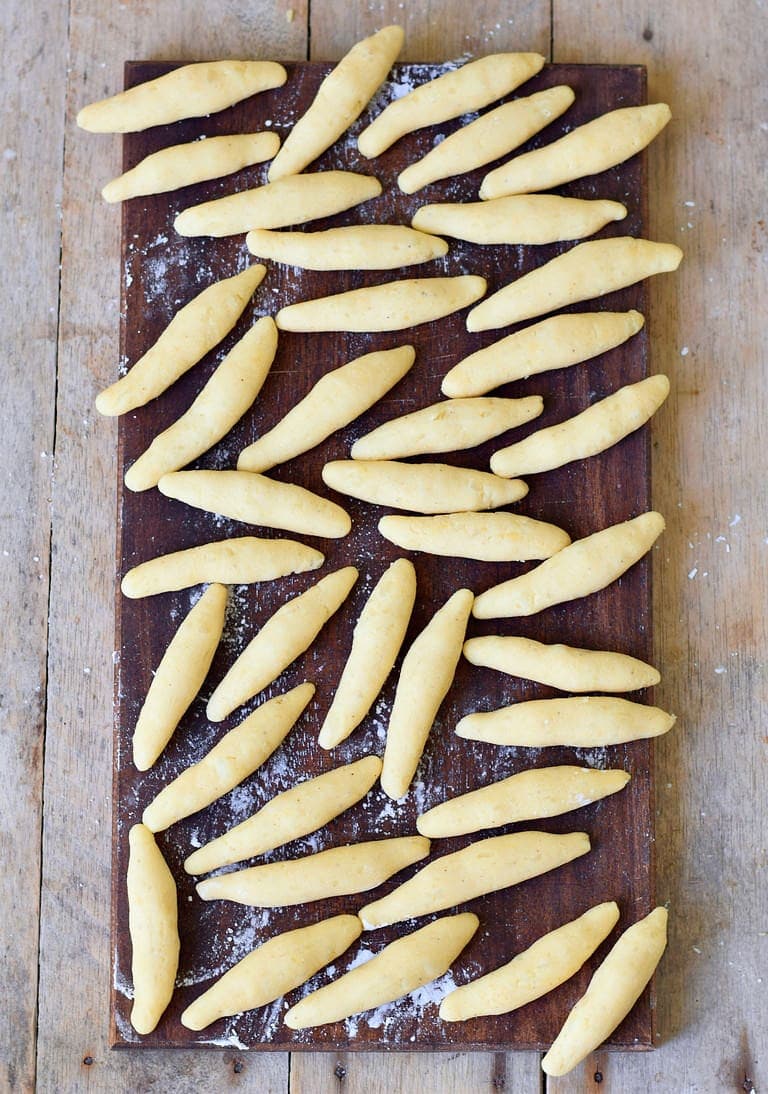
Simple Ingredients
The recipe is actually very similar to my Homemade Gnocchi. It’s made with potatoes, chickpea flour, and tapioca flour. I sometimes also add a little powdered vegetable broth (bouillon powder) which adds a wonderful flavor.
As you can see, you only need a few simple ingredients to make these delicious fried vegan dumplings.
A classic Schupfnudel recipe contains potatoes, regular all-purpose flour, and egg yolks. My recipe is not only egg-free and gluten-free, but it’s also grain-free, and protein-rich because of the chickpea flour!
All ingredients and measurements can be found in the recipe card below.
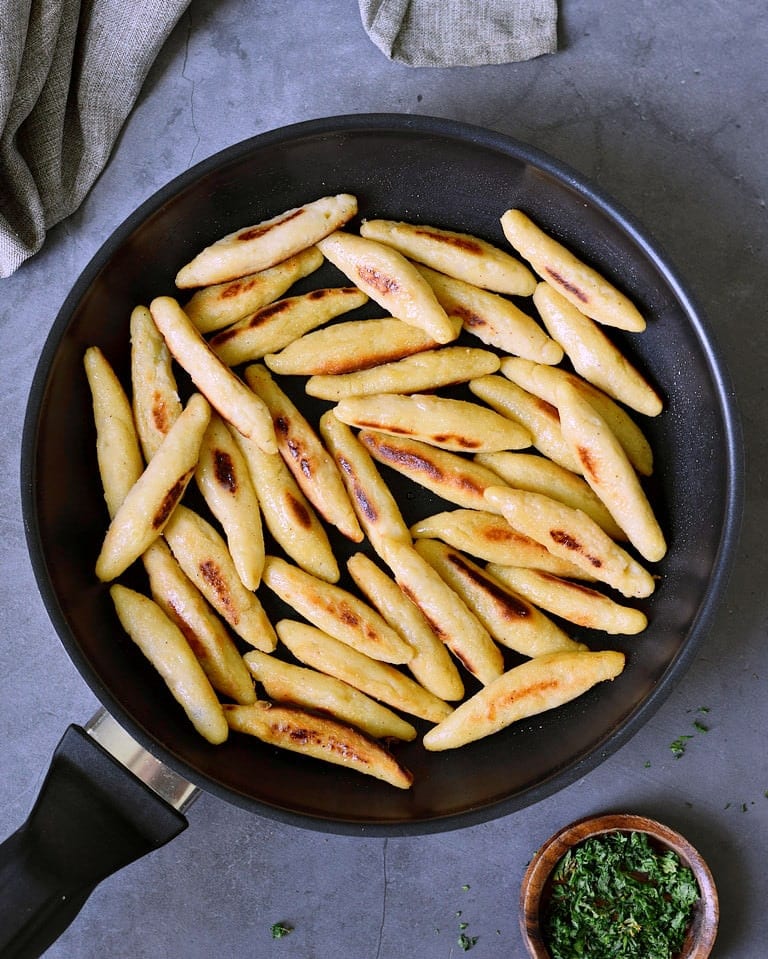
How To Make Schupfnudeln?
Below you can see a couple of process shots. The recipe isn’t complicated at all. All you need to do is boil the potatoes, mash them, and combine all ingredients in a large bowl. Roll the dough into long strands, form into tapered cylinders, then fry in a pan. It’s super easy actually!
PHOTO 1: In the first picture, I mash the cooked potatoes with a potato masher.
PHOTO 2: Next, I combined the mashed potatoes with the flour mixture. Knead with your hands until the dough comes together.
PHOTO 3: You can see how the dough looks like after kneading it for a few minutes. It should be smooth and not dry.
PHOTO 4: In the fourth photo I show how I rolled out the dough into strands.
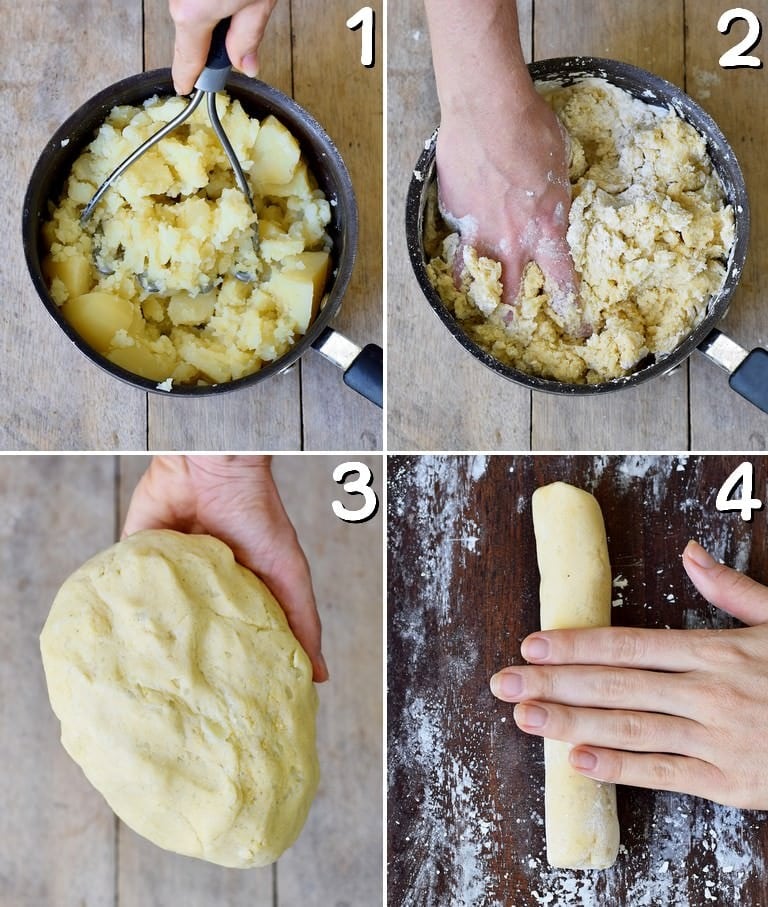
PHOTO 5: Use a knife to cut the dough into 1 to 1 1/2-inch pieces. Check the next photo below.
PHOTO 6: Roll each piece between your hands into finger-shaped dumplings. It doesn’t need to be perfect, just try to make them a similar size.
PHOTO 7: Heat oil in a pan and add the thick noodles. Fry from one side until nicely browned. Then flip and fry from the other side.
PHOTO 8: Add water to the pan and place a lid on top to steam the dumplings until the water evaporates.
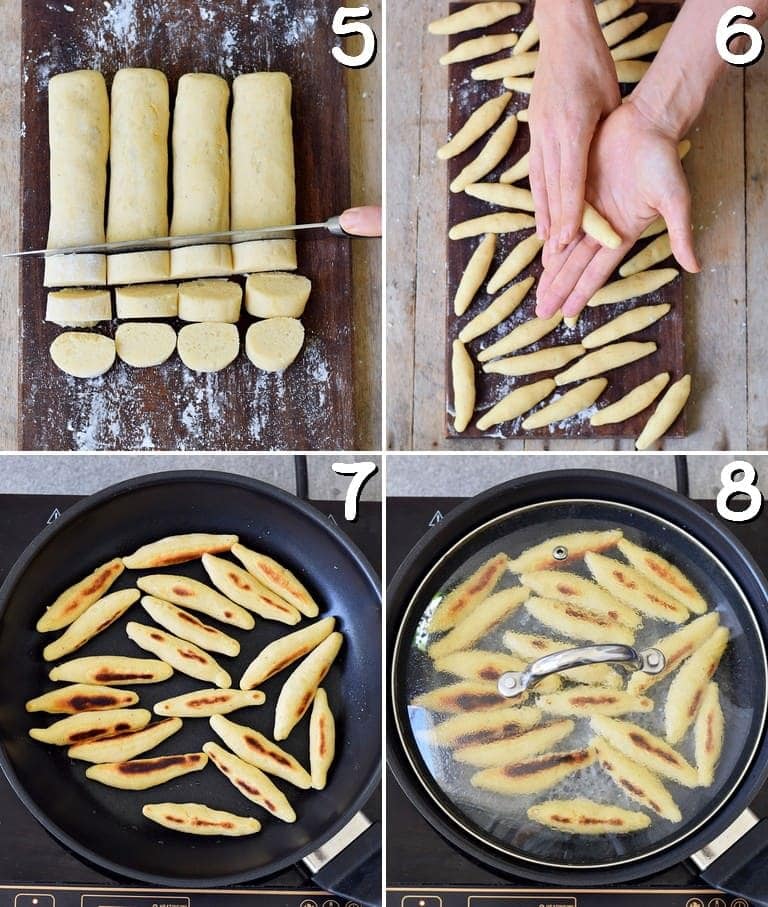
This method is the easiest and turns out great every time. However, it’s also possible to cook the potato noodles in boiling water first until they float to the top. Then remove them from the water with a slotted spoon and fry them in a pan with oil or vegan butter (same as gnocchi). Both options work but the first method is more convenient!
These cute looking German potato dumplings are a wonderful alternative to rice, regular potatoes or pasta. I am sure you will impress your guests with this interesting dish.
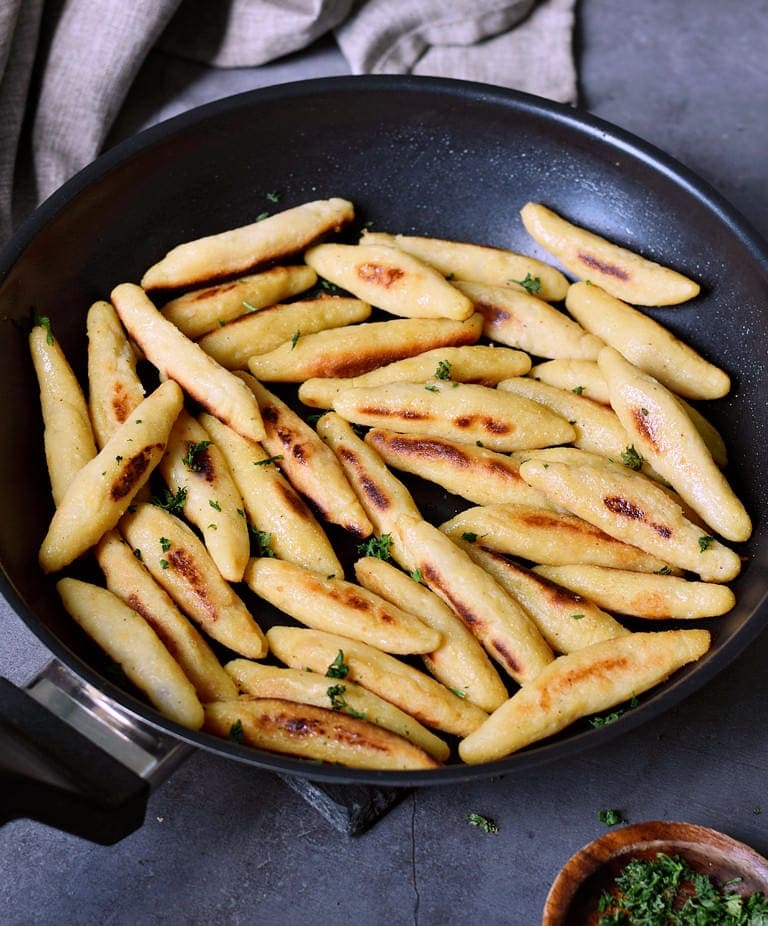
Which Type Of Potato?
I prefer Russet potatoes or Yukon Gold potatoes. They should be rather on the starchy side and not waxy. If you use waxy potatoes, the dough will turn out a little sticky. Yukon Gold is probably my favorite potato variety and perfect for this homemade recipe.
Are They Freezable?
Absolutely! I often make a larger batch and freeze half of the potato noodles for later use. You can freeze them on a baking tray. Once they are completely frozen, you can transfer the Schupfnudeln to a container or freezer bag. It works best to fry them in a pan right out of the freezer, no need to let them thaw (they get quite soggy/mushy when you let them thaw).
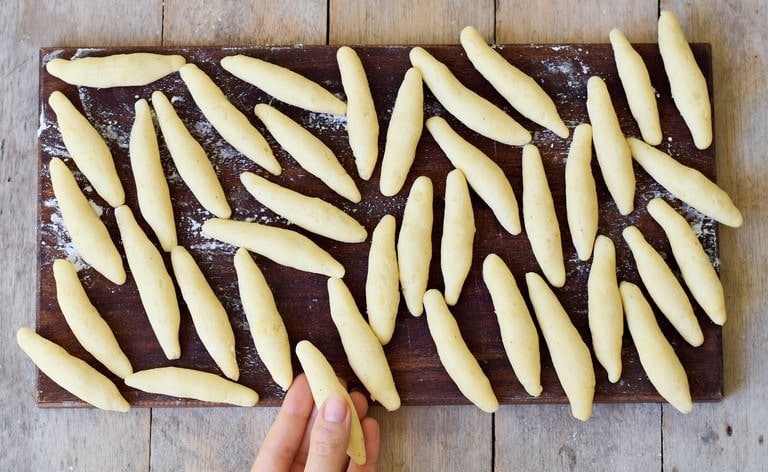
The Recipe Is:
- Vegan (egg-free, dairy-free)
- Gluten-free
- Grain-free
- Easy to make
- Hearty
- Perfect for dinner, appetizer, side dish
- Can be combined with many dishes
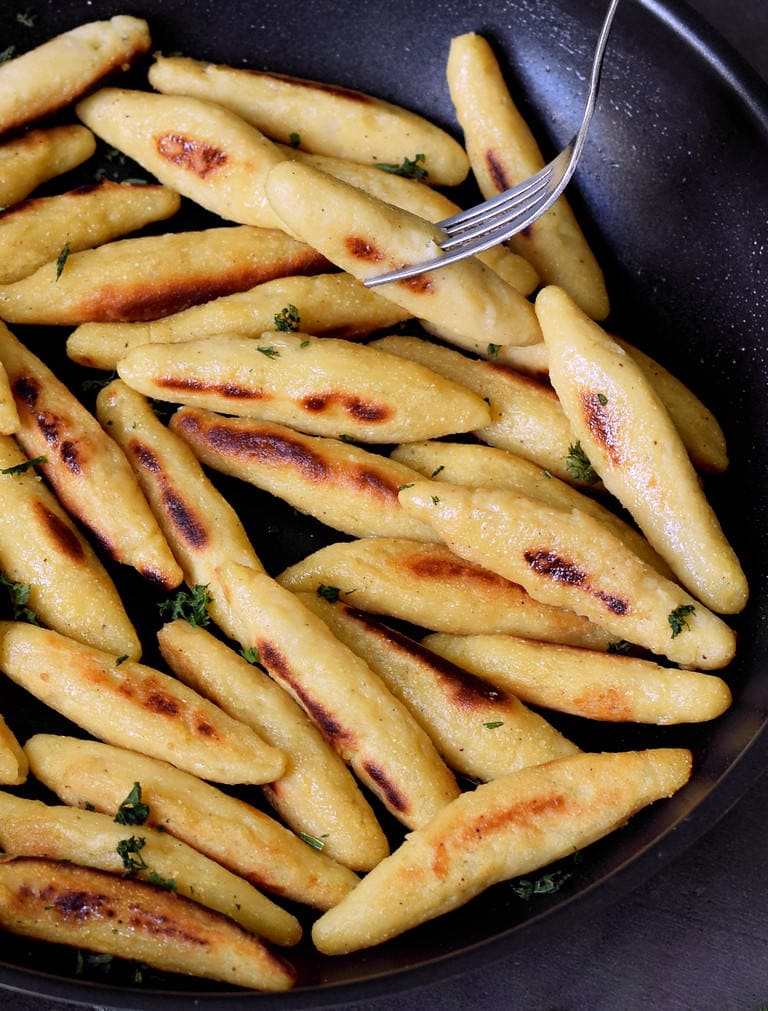
Should you give these homemade German Schupfnudeln a try, please leave a comment and rating below and don’t forget to tag me in your Instagram or Facebook post with @elavegan and #elavegan because I would love to see how your potato dumplings turned out! ????
Make sure to also check out my other traditional German recipes. They are vegan and gluten-free.
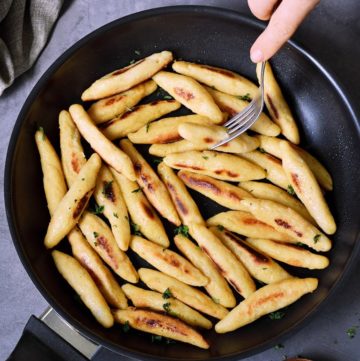
Homemade German Schupfnudeln
Ingredients
- 500 g potatoes e.g. Yukon Gold, peeled and chopped
- 3/4 to 1 cup (90-120 g) chickpea flour
- 1/2 cup (60 g) tapioca flour + more for dusting (*see recipe notes)
- 1/2 tsp sea salt
- Pinch of nutmeg
- Powdered vegetable broth/bouillon powder (optional)
Instructions
- Peel and chop potatoes, add them to a pot with salted water and bring to a boil. Cook on medium heat for about 15 minutes or until fork-tender, then drain. Transfer back to the pot and mash with a potato masher (don't use a food processor or blender).
- Add 3/4 cup of chickpea flour, the tapioca flour, salt, nutmeg (and the bouillon powder if using) and knead with your hands until a soft dough forms.
- The dough might still be a bit sticky but it should be fine to handle. If the dough is too sticky then add more chickpea flour and knead again. It depends on the type of potato whether you will need 3/4 cup or more chickpea flour.
- Cut the dough into equally sized pieces and dust with a little tapioca flour.
- With your fingers, roll each piece to strands (see step-by-step process shots above in the blog post).
- Use a knife to cut the dough into 1 to 1 1/2-inch pieces.
- Roll each piece between your hands into finger-shaped dumplings. It doesn't need to be perfect, just try to make them a similar size.
- Heat oil in a pan and add the Schupfnudeln. Fry from one side until nicely browned. Then flip and fry from the other side.
- Add 1/2 cup of water to the pan and place a lid on top to steam the dumplings until the water evaporates.
- This method is the easiest. However, it's also possible to cook the noodles in boiling water first until they float to the top. Then remove them from the water with a slotted spoon and fry them in a pan with oil or vegan butter (same as gnocchi). Both options work but the first method is more convenient!
- Store leftovers covered in the refrigerator for up to 3 days. You can also freeze the potato noodles as described above in the blog post. Enjoy!
Notes
- You can use arrowroot flour or cornstarch instead of tapioca flour. I had the best result with tapioca flour though.
- If you love potatoes, you might also like these Crispy Pan-Roasted Potatoes and Vegan Hash Browns
- Recipe serves 4. Nutrition facts are for one serving.
Nutrition information is an estimate and has been calculated automatically
If you are using Pinterest, feel free to pin the following photo:
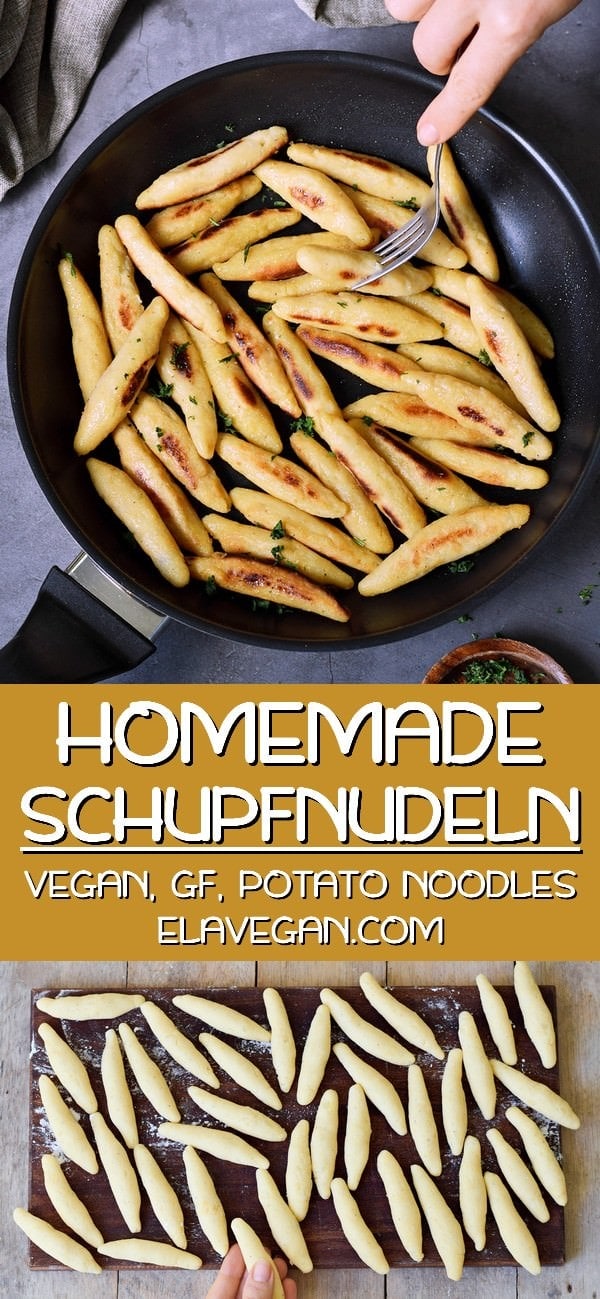


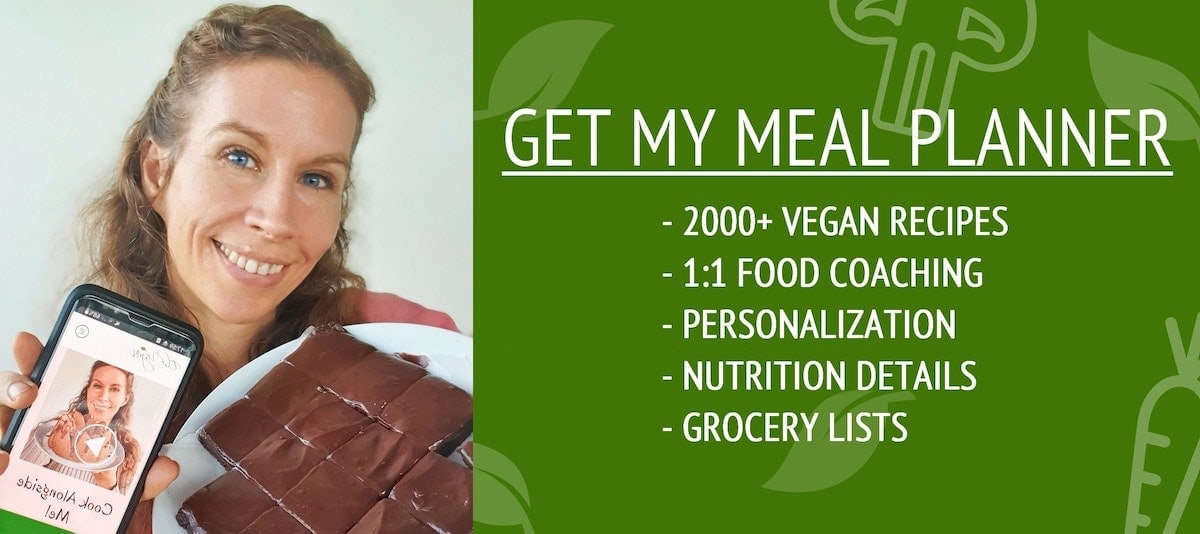
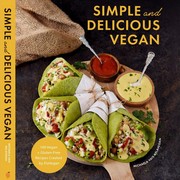
In my family, we boil them in salted water first (until they float) then fry them in butter. The butter flavor and crunch are loved by all.
I love the recipe! I made glutenfree and vegan fatfree apricot dumplings with this dow. !!! It is just perfect!!! They taste great! Like the real ones. I had to prepare the „Brösel“ , a while before, I made them of chickpeas, which is quite a procedure, best made in larger batches. Maybe you bring out your version of Marillenknödel, that would be great.
So glad you like the recipe, Kathrin. 🙂
Used purple ube potatoes with satisfying result: Textured like a corn dog: crispy outside, soft inside. Loved getting in touch with my German roots! Thank you.
Thanks for your great comment, Laurie. 🙂
This recipe rocks! An old tradition in my family. Brought over, as my grsndmothers saus, ” in the boat”. Thanks for posting!
You are so welcome, Dee! Glad you like it. 🙂
Followed direction to the T and all I got was a crumby mess….I’m really sad…
Hi Chris, did you use Yukon Gold potatoes or Russet potatoes? I made the recipe numerous times with Yukon Gold potatoes, and the mixture was never dry or crumbly.
My dad lives in the Black Forest. I miss the smell of the trees. I have completely forgotten about Schupfnudeln. They are so good.
That’s wonderful, Jen! 🙂
Sounds like a great recipe for the chest freezer! Do you freeze them after steaming/boiling but before you’d normally fry them? Or just raw?
After steaming works best. 🙂